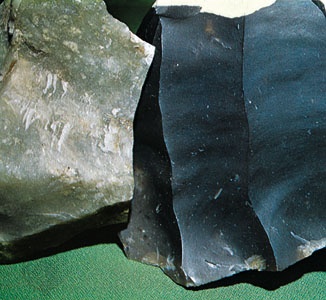siliceous rock
geology
 any of a group of sedimentary rocks (sedimentary rock) that consist largely or almost entirely of silicon dioxide (SiO2), either as quartz or as amorphous silica and cristobalite; included are rocks that have formed as chemical precipitates and excluded are those of detrital or fragmental origin.
any of a group of sedimentary rocks (sedimentary rock) that consist largely or almost entirely of silicon dioxide (SiO2), either as quartz or as amorphous silica and cristobalite; included are rocks that have formed as chemical precipitates and excluded are those of detrital or fragmental origin.The most common siliceous rock is chert (chert and flint), which is a dense, microcrystalline rock composed of chalcedony and quartz. Chert is the second most abundant chemically precipitated rock after limestone. It occurs in beds and in nodules. Bedded chert consists of siliceous fossils such as diatoms and radiolaria, which form siliceous oozes on the sea floor. As these organisms sink, portions of their shells dissolve near the bottom and reprecipitate in void spaces between shell fragments, resulting in a hard bedded rock. Bedded cherts are common in areas enriched in silica-bearing organisms, as for example near volcanoes where volcanic glass is rapidly altered to produce high-silica concentrations. Similar processes occur in freshwater lakes associated with volcanoes.
Nodular cherts appear to be produced by the alteration of preexisting sedimentary rock. In this process silica distributed throughout the rock dissolves and reprecipitates to form nodules. Mixed sediments, such as siliceous shales and limestones, also appear to be a diagenetic redistribution of siliceous organisms.
- Francis Viélé-Griffin
- Francis Wayland Ayer
- Francis William Aston
- Francis Willoughby, 5th Baron Willoughby
- Francis Willoughby Willoughby, 5th Baron
- Francis Xavier Ford
- Francis X. Bushman
- Francis Ysidro Edgeworth
- Franciszek Bohomolec
- francium
- Franck, César
- Francke, August Hermann
- Francke, Meister
- Franck-Hertz experiment
- Franck, James
- Franck, Sebastian
- Franco-American Alliance
- Franco-Cantabrian art
- Franco, Carmen Polo de
- Franco, Francisco
- Franco-German War
- francolin
- Franco Modigliani
- Franco-Netherlandish school
- Franconia